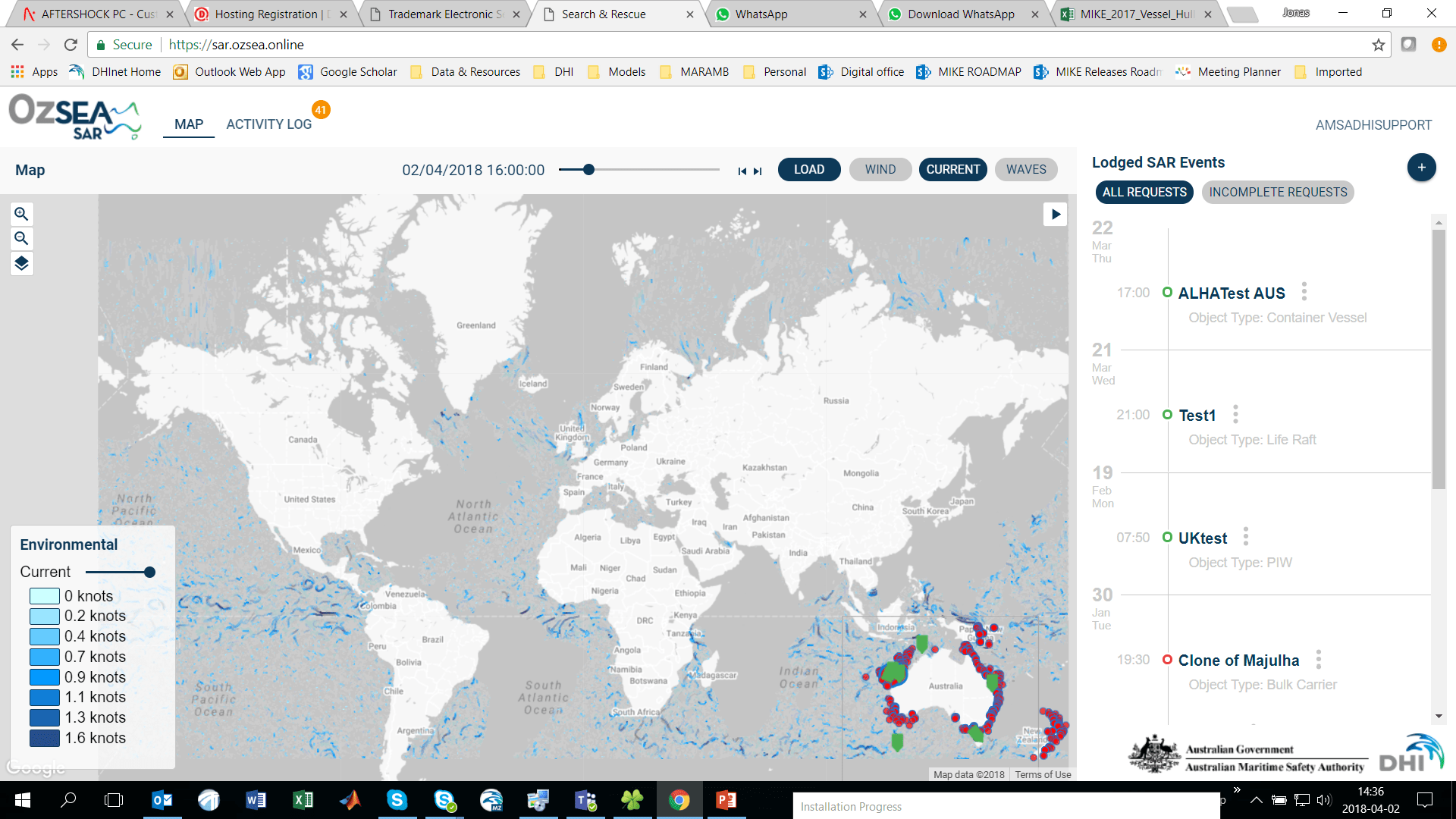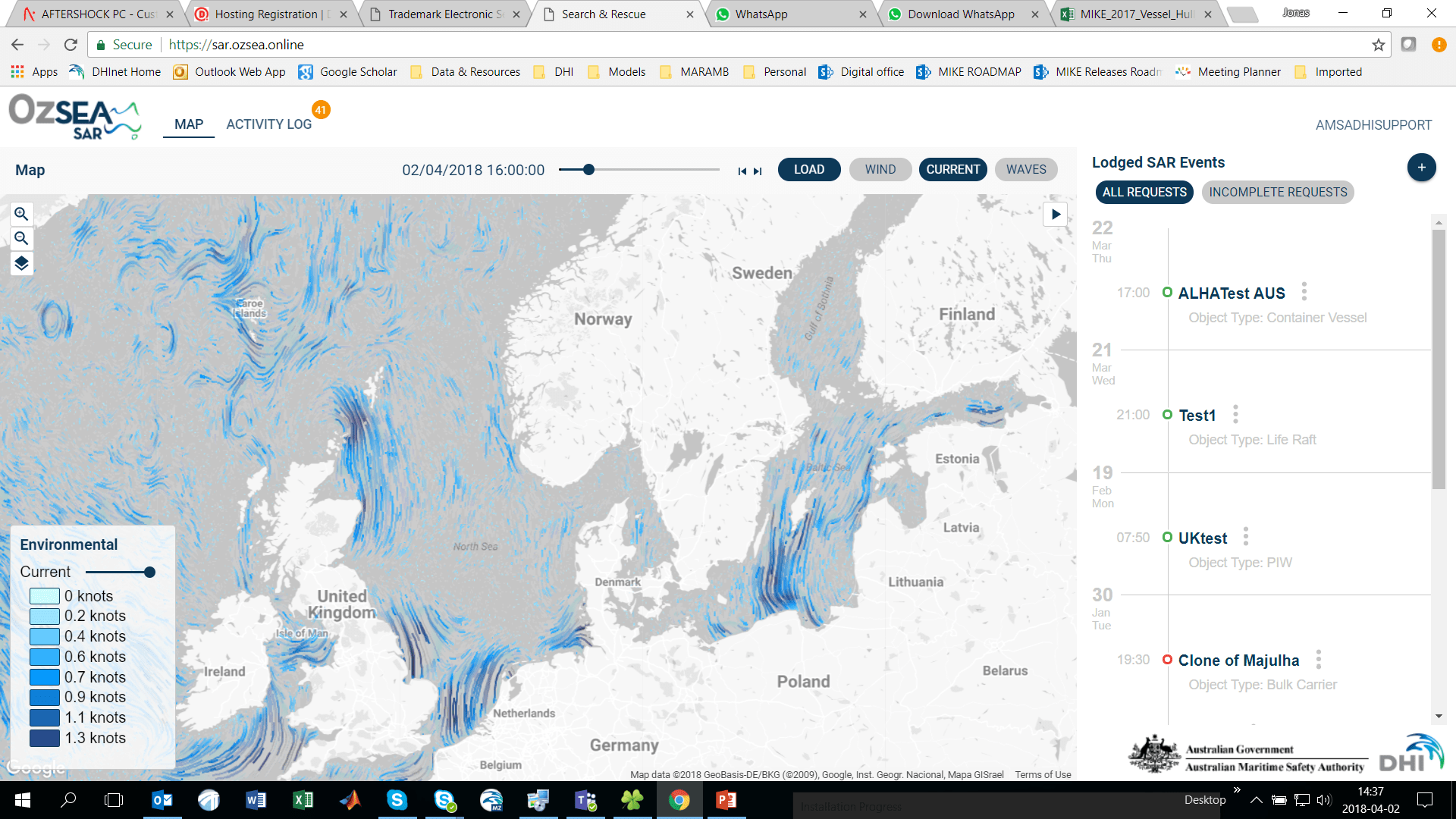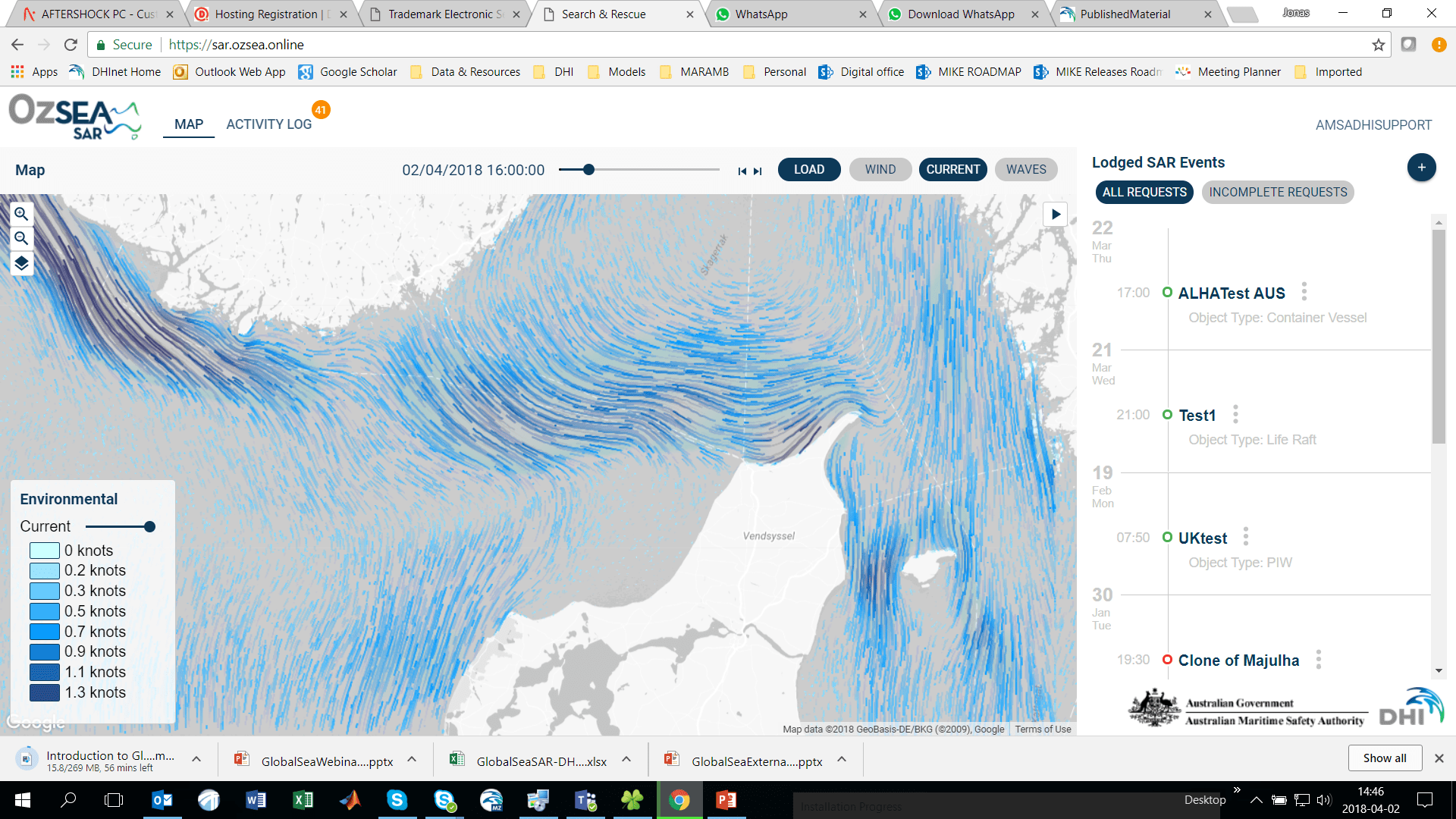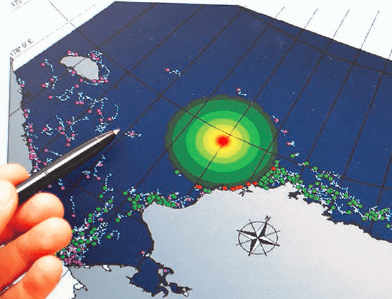Long-term offshore oil and gas activities, port expansion projects and more recent growth in the offshore renewable and deep-sea mining sectors illustrate that coastal and marine waters continue to be important areas for development.
At the same time, there is a deepening concern that these activities are, or may be, causing unknown or unacceptable levels of cumulative environmental impacts and risk. Developers and environmental practitioners are therefore being tasked with intensified requirements to assess and quantify all facets of environment risk and impact, abate them before they occur and / or accurately react to accidental events.
 Dynamic tilling of hydrodynamics (currents waves) and wind provides on a high-performance cloud platform provides a robust foundation for real time oil spill assessment at any location on demand
Dynamic tilling of hydrodynamics (currents waves) and wind provides on a high-performance cloud platform provides a robust foundation for real time oil spill assessment at any location on demand
Emerging data assimilation and impact analysis models are making this previously difficult task more feasible and effective. Advances in deterministic hydrodynamic and related environmental pressure modelling (e.g. water quality, underwater acoustics etc.) are now being supported by ‘integrated’ modelling that includes stochastic Agent-based Modelling (ABM). This allows environmental response to impact pressures to be addressed quantitatively and with greater reliability than earlier desktop assessments. Enabled by high performance computing, these data and computationally heavy modelling tasks are increasingly being used in real-time applications and as tools for operational environmental monitoring, management and response control.
 Dynamic tilling of hydrodynamics (currents waves) and wind provides on a high-performance cloud platform provides a robust foundation for real time oil spill assessment at any location on demand
Dynamic tilling of hydrodynamics (currents waves) and wind provides on a high-performance cloud platform provides a robust foundation for real time oil spill assessment at any location on demand
A second trend is the increasing use of cloud-based infrastructure to allow broader access to more centralized and maintained modelling tools. Some of these advancements in modelling techniques and delivery methods can be seen in recently released tools such as the GlobalSea Oil Spill and the Marine Animal Movement Portal.
The Marine Animal Movement Portal is an online risk analysis tool that empowers the marine industries to gauge potential environmental risks from their planned activities and test avoidance and mitigation options. Based on integrated MIKE Powered by DHI models, the system describes and explains the presence and movement patterns of vulnerable marine mammals and birds and their responses to, or exposure from, underwater noise and oil spills.
 Dynamic tilling of hydrodynamics (currents waves) and wind provides on a high-performance cloud platform provides a robust foundation for real time oil spill assessment at any location on demand
Dynamic tilling of hydrodynamics (currents waves) and wind provides on a high-performance cloud platform provides a robust foundation for real time oil spill assessment at any location on demand
MIKE 21/3 is the system platform, upon which cutting edge dynamic habitat modelling is derived and marine mammal and bird ABM models (MIKE ABM Lab) are coupled. Using a baseline of target species movement behavior, the system allows users to incorporate the capabilities of MIKE Oil Spill (OS) and underwater noise propagation algorithms to simulate potential impacts to the agents. ‘Big data’ is essential. The tool relies heavily on the description of animal response, typically prepared in partnership with academic institutions. The first application of the portal covers the entire Barents Sea and removed the need for individual developers to build the underlying models by providing these pre-established and continuously updated via a maintained cloud platform.
 Response of marine mammal agents to underwater sound showing avoidance
Response of marine mammal agents to underwater sound showing avoidance
Data assimilation, distributed high performance modelling engines, and cloud access can also provide superior near real-time oil spill output to improve oil spill emergency preparedness. An example of such technology is the online GlobalSea Oil Spill tool. This operational application enables users to forecast the movement and transformation of accidental oil spills at sea anywhere, anytime in the world. The system applies a global model of currents, waves and wind and MIKE 21/3 OS. The underlying model are continuously updated through assimilation of measured data, which ensures that users have access to the most accurate underlying hydrodynamics for their oil spill predictions without need for maintaining specific local models.
The trend towards integrated environmental modelling is likely to continue to accelerate as the benefit of these tools in quantifying environmental risk becomes more widely accepted. The trend in cloud access to centrally maintain modelling resources is also likely to accelerate as cloud computing costs decrease and the range of available (modelling) platforms increases. This latter trend of putting well maintained and reliable modelling tools into the hands of regulators, developers and communities will be a game changer in the field of environmental assessment and management in the coming years.
Story by DHI





